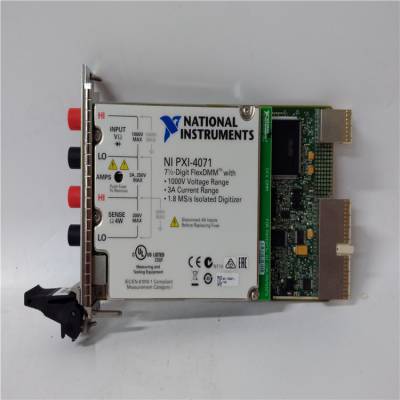 E-00000-411-600-1 DCS 计算器组件 ABB
¥3137.00
E-00000-411-600-1 DCS 计算器组件 ABB
¥3137.00
 E-00000-411-600-1 DCS过冷裕量计算器组件 ABB
¥3137.00
E-00000-411-600-1 DCS过冷裕量计算器组件 ABB
¥3137.00
 BAMU-11 3AUA0000109935 驱动器 斯诺尔 ABB
¥3137.00
BAMU-11 3AUA0000109935 驱动器 斯诺尔 ABB
¥3137.00
 E-00000-411-600-1 DCS 计算器组件 ABB
¥3137.00
E-00000-411-600-1 DCS 计算器组件 ABB
¥3137.00
 E-00000-411-600-1 DCS过冷裕量计算器组件 ABB
¥3137.00
E-00000-411-600-1 DCS过冷裕量计算器组件 ABB
¥3137.00
 BAMU-11 3AUA0000109935 驱动器 斯诺尔 ABB
¥3137.00
BAMU-11 3AUA0000109935 驱动器 斯诺尔 ABB
¥3137.00
NSV 02 44209-710.01 应用于控制系统电源模块 GRUNDIG
NSV 02 44209-710.01 应用于控制系统电源模块 GRUNDIG
NSV 02 44209-710.01 应用于控制系统电源模块 GRUNDIG
然后,IdeasViews部分***该数据所属的DoDAF视图
该部分如下图所示。如果收到DM2 PES XML文档,则
视图在数据集中表示,此XSD可用于验证
文档,以查看是否存在强制数据,以及是否存在非可选数据
包含。
93
物理交换规范
http://cio-nii.defense.gov/sites/dodaf20/PES.html[2011年3月3日下午3:37:04]
用于数据交换的DM2 PES XSD的IdeasViews部分示例
PES XSD可在此处下载:
思想基金会
DM2基金会
DM2域
IC-ISM
DM2工作组可以获得正在进行的DM2 PES XML文档示例
DM2协作网站www.silverbulletinc上的成员。com/dm2,并将
可在DoDAF期刊上向整个EA社区提供。
转到页面顶部↑
隐私政策|网络政策124;联系人
94
DoDAF形式本体
http://cio-nii.defense.gov/sites/dodaf20/Ontology1.html[2011年3月3日下午3:37:09]
首页DoDAF-DM2工作组DoDAF期刊***部元数据注册想法链接
DM2
DoDAF形式本体
DM2基于国际***企业体系结构规范
(想法)(或/wiki/IDEAS_Group)正式的
由美国***部和各部开发的本体基础
美国、英国、加拿大、澳大利亚和瑞典协调北大西洋
条约组织(北约)。所有DoDAF概念和概念关系都继承了几个
从思想基础上严格定义数学属性。上部的视图
IDEAS基础的级别如下图所示。
思想是顶层的基础
思想基础是高阶的。它是外延的(参见外延[形而上学]),使用
物理存在作为其身份的标准。实际上,这意味着本体是
非常适合管理变更时间,并识别具有一定程度
仅使用名称不可能达到的精度。本体定义方法
是非常***的身份标准,基于两件事是否
使用可以准确识别的东西是相同的。所以,比较两个
个体,如果他们在同一时间占据完全相同的空间,他们是相同的。
显然,这只适用于个人,但该原则也可用于比较类型。
要使两个类型相同,它们必须具有相同的成员。如果这些成员是:
出身背景
建筑发展
元模型
概念的
必然的
PES
思想基金会
本体论
观点和模型
展示技巧
配置管理
概述
缩略语列表和词汇表
术语
网站地图
档案
***部
95
DoDAF形式本体
http://cio-nii.defense.gov/sites/dodaf20/Ontology1.html[2011年3月3日下午3:37:09]
个人,他们的身体范围可以比较。如果成员是类型,则
分析将继续进行,直到找到个体,然后进行比较。优势
这种方法的一个特点是名称与事物分开,因此不可能
对正在讨论的内容感到困惑。它也是四维的,所以时间部分
(或状态)可以与前后行为一起表示。部分书目
用于推导IDEAS基础的研究和参考资料包括在
本文件附录。
这些基础特性均不异常;他们每天都在推理。
基本概念是:
1.三种基本类型的事物:
个体是存在于3D空间和时间中的事物,即具有4D时空范围。
事物的类型、集合或集合。区分了两种重要类型:
其成员为个人的成员和其成员不是
个人。这是天真集理论和类型之间的重要区别
学说
元组,事物之间的有序关系,例如2D分析中的有序对
几何图形、关系数据库表中的行和主语-动词-对象三元组
资源描述框架。
2.基本关系:
集合论:
超亚型;e、 例如,一种类型的系统或服务、能力、装备,
组织或条件。
类型实例,类似于集合论中的“元素”
Mereologic:
整体或部分;e、 g.化合物
NSV 02 44209-710.01 应用于控制系统电源模块 GRUNDIG
NSV 02 44209-710.01 应用于控制系统电源模块 GRUNDIG
The IdeasViews section then specifies what DoDAF views this data pertains to. A sample of
this section is shown in the figure below. If a DM2 PES XML document is received and these
views are indicated as being represented in the dataset, this XSD can be used to validate the
document, to see that the mandatory data is present and that data that is not optional is not
contained.
93
Physical Exchange Specification
http://cio-nii.defense.gov/sites/dodaf20/PES.html[3/3/2011 3:37:04 PM]
Sample of the IdeasViews Section of the DM2 PES XSD for Data Exchange
The PES XSD's can be downloaded here:
IDEAS Foundation
DM2 Foundation
DM2 Domain
IC-ISM
In-progress examples of DM2 PES XML documents are available to DM2 Working Group
members on the DM2 Collaboration Site /dm2, and will be made
available to the entire EA community on the DoDAF Journal.
Go to top of page ↑
Privacy Policy | Web Policy | Contacts
94
DoDAF Formal Ontology
http://cio-nii.defense.gov/sites/dodaf20/Ontology1.html[3/3/2011 3:37:09 PM]
Home DoDAF-DM2 WG DoDAF Journal DoD Meta Data Registry IDEAS Links
DM2
DoDAF Formal Ontology
The DM2 is founded upon the International Defence Enterprise Architecture Specification
(IDEAS) ( or /wiki/IDEAS_Group) a formal
ontology foundation developed by the defense departments and ministries of the United
States, United Kingdom, Canada, Australia, and Sweden in coordination the North Atlantic
Treaty Organization (NATO). All DoDAF concepts and concept relationships inherit several
rigorously defined mathematical properties from the IDEAS Founda tion. A view of the upper
levels of the IDEAS Foundation is shown in the figure below.
IDEAS Foundation Top-Level
The IDEAS Foundation is higher-order. It is extensional (see Extension [metaphysics]), using
physical existence as its criterion for identity. In practical terms, this means the ontology is
well suited to managing change-over time and identifying elements with a degree of
precision that is not possible using names alone. The methodology for defining the ontology
is very precise about criteria for identity by grounding reasoning about whether two things
are the same using something that can be accurately identified. So, comparing two
individuals, if they occupy precisely the same space at the same time, they are the same.
Clearly this only works for individuals, but the principle can be used to compare types too.
For two types to be the same, they must have the same members. If those members are
Background
Architecture Development
Meta-Model
Conceptual
Logical
PES
IDEAS Foundation
Ontology
Viewpoints & Models
Presentation Techniques
Configuration Management
Overview
Acronyms List and Glossary
of Terms
Site Map
Archives
Department of Defense
95
DoDAF Formal Ontology
http://cio-nii.defense.gov/sites/dodaf20/Ontology1.html[3/3/2011 3:37:09 PM]
individuals, their physical extents can be compared. If the members are types, then the
analysis continues until individuals are reached, then they can be compared. The advantage
of this methodology is that names are separated from things and so there is no possibility of
confusion about what is being discussed. It is also four dimensionalist so that temporal parts
(or states) can be represented, along with before-after behaviors. A partial bibliography of
research and reference material used in deriving the IDEAS Foundation is included in the
appendix to this document.
None of these foundation properties are unusual; they are all used in reasoning everyday.
The basic concepts are:
1. Three basic types of Things:
Individuals are Things that exist in 3D space and time, i.e., have 4D spatialtemporal extent.
Types, sets or collections of things. Two important Types are distinguished –
ones whose members are Individuals and those whose members are other than
Individuals. This is an important distinction between naïve set theory and type
theory.
Tuples, ordered relations between things, e.g., ordered pairs in 2D analytic
geometry, rows in relational database tables, and subject-verb-object triples in
Resource Description Framework.
2. Basic relationships:
Set theoretic:
Super-subtype; e.g., a type of system or service, capability, materiel,
organization, or condition.
Type-instance, similar to “element of” in set theory
Mereologic:
Whole-part; e.g., compon
NSV 02 44209-710.01 应用于控制系统电源模块 GRUNDIG
 在线问
在线问
